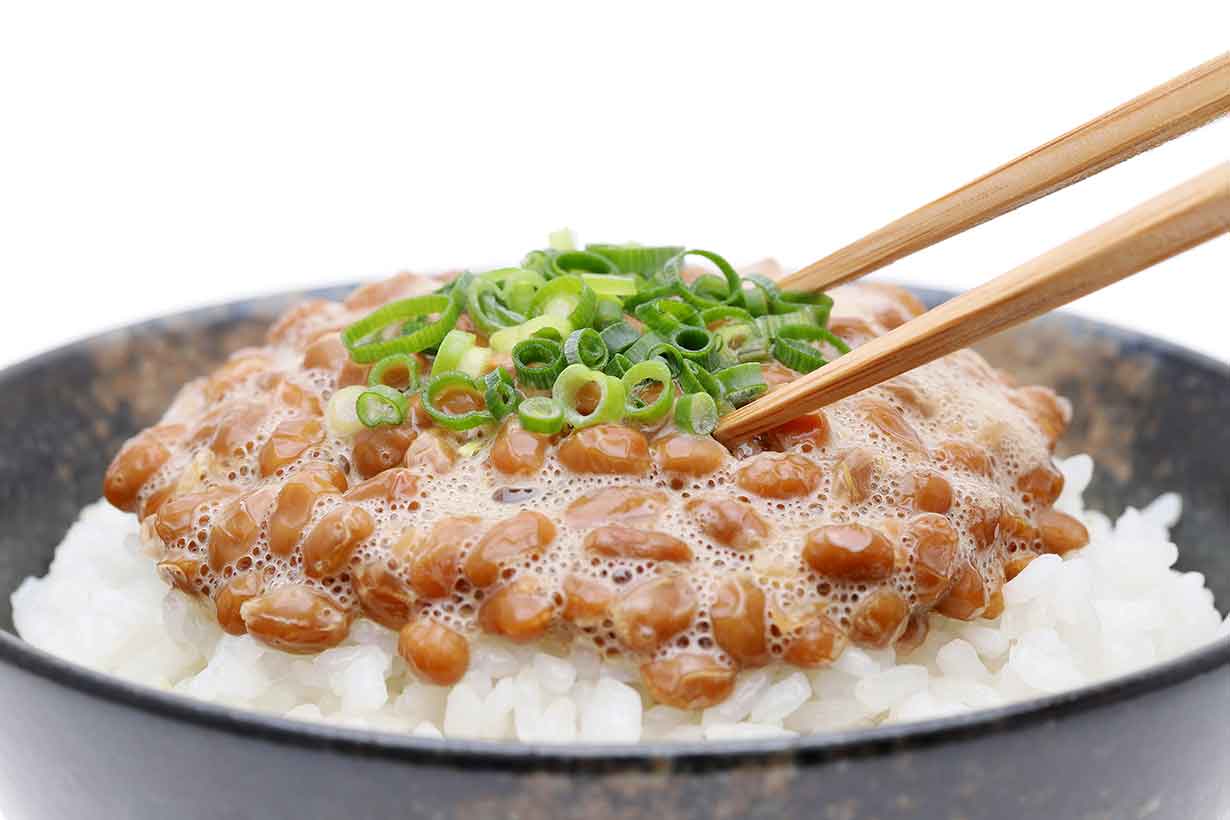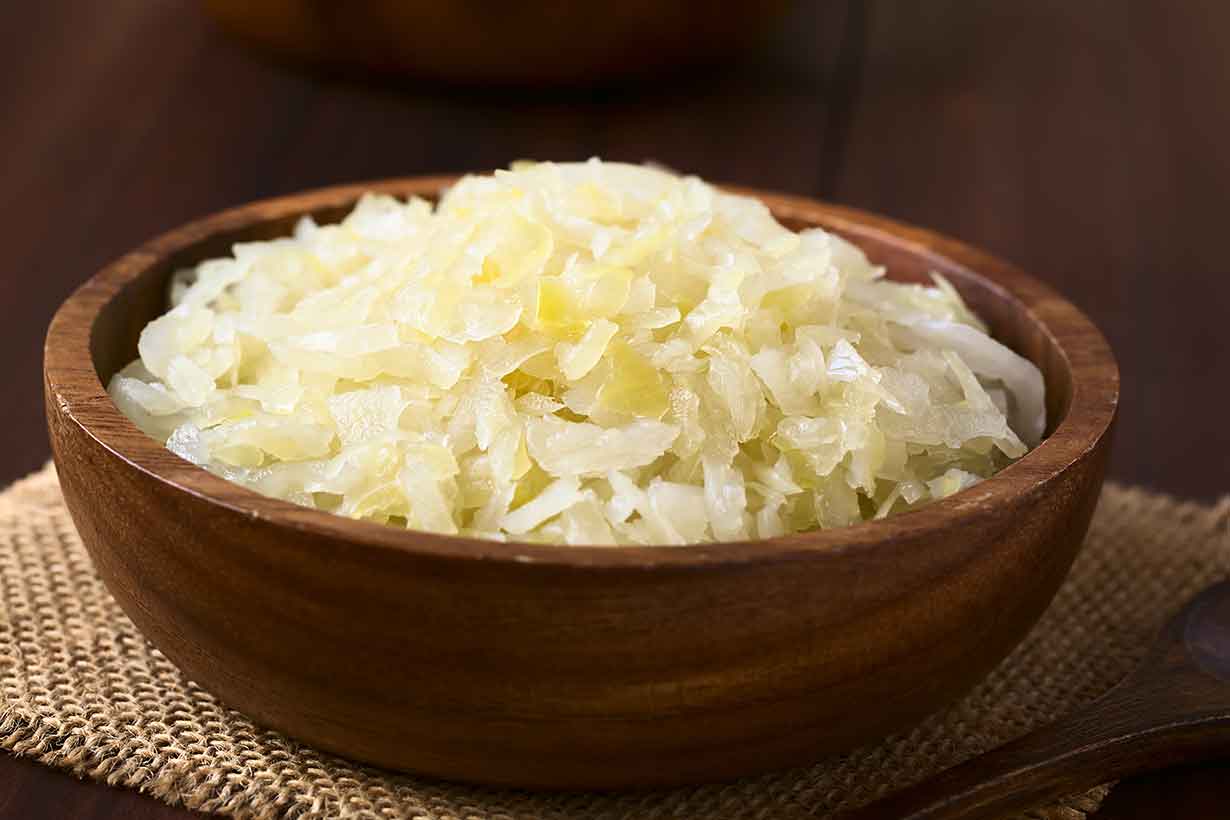Miso is a popular fermented soy food with a long history.
It is a staple food in its Japanese homeland, and most people consume miso daily.
This article examines what miso is, the different available varieties, and what it offers nutritionally.
What Is Miso?

Miso is a thick and sticky paste made from fermented soybeans.
This fermented paste has long been part of Japanese culture, with the origins of modern miso dating back to the sixth century. However, recorded writings of earlier miso varieties that go back thousands of years (1).
Notably, Japanese citizens consume an average of twenty grams of miso every single day (2).
Miso has a salty and unique umami taste, and it is very flavorful too. For this reason, it features in a wide range of foods, from stocks and soups to dips, marinades, and sauces.
The most popular use of miso is for making a soup of the same namesake. There are numerous varieties of miso soup, but they usually feature miso, seaweed, tofu, and water as their base ingredients.
In a nutritional sense, miso provides ample amounts of carbohydrates, fat, and protein, as well as a good mix of vitamins and minerals.
Miso is quite different from natto, and it has a much milder flavor than other fermented soybean pastes such as cheonggukjang.
Types of Miso
Dozens of different miso varieties exist due to a broad range of unique regional recipes.
However, four of the most popular types include:
- White miso (Shiro miso): this version features soybeans and a larger proportion of rice, and it has a shorter fermentation time than other popular varieties. It has a very light caramel-like color and a mild taste.
- Red miso (Aka miso): undergoes a longer fermentation process, and it has a darker reddish-brown color. It contains less rice and more soybeans or grains such as barley. These changes give red miso a more robust and pungent flavor.
- Mixed miso (Awase miso): this variety is a mix of white and red miso, and it has taste characteristics in between the two.
- Brown miso (Genmai miso): unlike regular miso paste, this variety uses brown rice, and it is a modern rather than traditional product. It is similar to mixed miso in the sense that it is milder than red miso yet stronger than white miso.
Nutrition Facts
Now that we know what miso is, what does it offer nutritionally?
According to the USDA’s FoodData Central, miso offers the following nutritional values (3):
| Name | Amount | % Daily Value |
|---|---|---|
| Calories | 56 kcal | 2.8% |
| Carbohydrates | 7.19 g | 2.4% |
| Fiber | 1.53 g | 6.1% |
| Sugars | 1.76 g | |
| Fat | 1.70 g | 2.6% |
| Saturated | 0.29 g | 1.5% |
| Monounsaturated | 0.32 g | |
| Polyunsaturated | 0.82 g | |
| Omega-3 | 0.11 g | |
| Omega-6 | 0.70 g | |
| Protein | 3.63 g | 7.3% |
| Salt | 2.68 g |
Vitamins and Minerals
Here are the vitamins and minerals present in an ounce (28-gram) of miso. These values were calculated using the USDA FoodData Central database and the FDA’s published daily values (3, 4).
Vitamins
- Vitamin K: 7% DV
- Riboflavin (B2): 5% DV
- Choline: 4% DV
- Vitamin B6: 4% DV
- Thiamin (B1): 3% DV
- Niacin (B3): 2% DV
- Folate: 1% DV
- Pantothenic acid (B5): 2% DV
- Vitamin A RAE: <1% DV
- Vitamin B12: 1% DV
Minerals
- Sodium: 46% DV
- Copper: 13% DV
- Manganese: 10% DV
- Zinc: 7% DV
- Phosphorus: 4% DV
- Iron: 4% DV
- Selenium: 4% DV
- Magnesium: 3% DV
- Potassium: 1% DV
- Calcium: 1% DV
Miso May Have Digestive Benefits
Miso fermentation involves the use of a starter culture called Aspergillus oryzae. After the fermentation process, research shows that the following microorganisms are present (5):
- Bacillus subtilis
- Bacillus amyloliquefaciens
- Staphylococcus gallinarum
- Staphylococcus kloosii
- Lactococcus sp. GM005
These microorganisms are sometimes referred to as ‘beneficial bacteria’ or ‘probiotics’ as they inhibit the human gastrointestinal tract and are associated with improved digestive health (5, 6).
Further, one study demonstrated that daily intake of miso soup for two weeks led to increased levels of Bacillus and Bifidobacterium in human feces. In contrast, decreased levels of Enterobacteriaceae were noted (7).
Interestingly, a lower ratio of Bifidobacterium to Enterobacteriaceae microorganisms is seen in patients with higher inflammation levels (8).
However, while this is an interesting observation, it does not mean that increasing Bifidobacterium would have anti-inflammatory effects.
Furthermore, systematic reviews have demonstrated that higher levels of Bifidobacterium may improve immune function and lessen abdominal pain in patients with irritable bowel syndrome (9, 10).
Some Studies Show That Miso May Potentially Lower Blood Pressure (Mixed Evidence)
Miso contains large amounts of sodium: an ounce (28g) serving provides 46% of the daily value for the mineral (3).
On this note, a Japanese observational study identified miso as a significant contributor to the nation’s daily salt intake. Further, the study suggested that reducing intake may help to decrease average salt intake (11).
Despite this, surprisingly, several rodent studies suggest miso may decrease blood pressure (12, 13, 14).
Additionally, a randomized trial examined the effects of two daily servings of miso soup on healthy human participants. These servings contributed 3.8 grams of salt per day, yet did not raise blood pressure throughout the study compared to a control group consuming a placebo containing 0.2 grams of salt (15).
However, it should be noted that this particular study used a specially manufactured miso product called Marukome MK-34-1. This miso was developed to have a more significant effect on ACE inhibitory activity (thought to lower blood pressure). Therefore, it is not possible to say if standard miso on store shelves would have the same impact (16).
Lastly, a population-based observational study followed 4165 healthy participants over five years. The study found that a higher intake of fermented soy products such as miso (but not total soy) was associated with a lower risk of developing high blood pressure (17).
As with all observational research, we cannot infer that fermented soy intake caused this lower risk. For instance, people consuming more fermented soy (traditional Japanese food) may also have other healthy dietary behaviors compared to those eating more modern (processed) foods.
Other Potential Health Effects
Observational research has identified that miso intake is associated with a lower risk of several cancers, including breast cancer and prostate cancer (18, 19, 20, 21, 22).
Researchers have hypothesized that this lower risk may be due to the isoflavone content of miso (and soy products in general). Isoflavones are a type of polyphenol associated with a slightly reduced risk of certain cancers (23, 24, 25, 26, 27).
However, it is vital to recognize the limitations of observational research. Once again, these associations between miso intake and lower cancer risk could be because individuals who consume more miso have other healthy lifestyle behaviors.
Further, one meta-analysis of studies found that men who consume higher amounts of miso had an increased risk of gastric cancer (28).
In other words, the research is mixed and inconclusive.
Potential Downsides
Despite the different studies on miso and blood pressure, there are no conclusive human trials, and it is worth remembering that miso is very high in salt.
For individuals with salt sensitivity hypertension, it may be prudent to at least discuss miso consumption with a doctor or dietitian.
Additionally, miso is a soy product, and soybeans are one of the world’s eight major allergens identified by law (29).
Typical symptoms of an allergic reaction may include hives, abdominal pain, and swelling around the mouth/tongue. In the case of a severe allergic reaction, more serious reactions such as dizziness, breathing difficulties, and even anaphylaxis can occur (29, 30).
For more information, the American College of Allergy, Asthma & Immunology has a comprehensive resource on soy allergy.
Aside from these issues, it is worth noting that, despite being a soy product, miso is relatively low in protein. Other soy products like tempeh and extra firm tofu offer far more protein.
How To Use Miso
For those with a packet of miso at home, what can we do with it?
Soup
The most popular recipe is miso soup.
Any miso product will usually have a recipe for making this soup on the packaging.
On the positive side, it is incredibly easy to make: simply boil some water on the hob and then add the miso paste and any additional ingredients as desired.
Marinades
Miso can also add a lot of flavor to meat and fish, or even other soy-based foods like tempeh.
However, the paste alone is a little strong, so it is better to mix it with additional ingredients.
A combination of olive oil and balsamic vinegar works well in this regard, and a simple ratio makes an easy and tasty marinade:
- 2 tbsp white miso
- 2 tbsp olive oil
- 1 tbsp balsamic/malt vinegar
- Pinch of favored herbs (if desired)
Other Uses
It is possible to use miso in so many different ways, and we can add it to soups, stews, and stir-fries as a flavor enhancer.
For more ideas, see this useful guide on 35 ways to use miso.
Where To Buy
While miso is relatively new to much of the Western world, it is usually possible to find some kind of product in most major supermarkets/grocery stores.
However, it can sometimes be overpriced in these locations.
If there are any nearby, a local Asian market/store tends to be a better place to find a traditional miso product that is reasonably good value.
Final Thoughts
Miso plays a part in the diet of most Japanese people, it tastes delicious, and it’s a good source of several vitamins and minerals.
It may also have some potential health benefits, but more robust evidence is probably necessary to more clearly confirm these.





